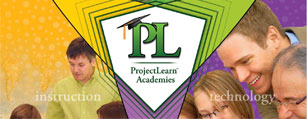Formative assessment during project-based learning
Inform learning and practice to support progress and ensure success

Formative assessment — assessment for learning, not of it — helps ensure progress during project-based learning (PBL). In a project-based approach, students are presented with a real issue or problem and learn content to solve it. Formative assessment helps student make informed decisions about their learning and helps teachers adjust their instruction to better support student learning during the PBL process.
Formative assessment during PBL helps teachers:
- Identify where students are now in relation to their learning goals.
- Determine how to best use time to support student learning, and better predict how much time will be needed.
- Give meaningful feedback to students and specific ways to improve.
Formative assessment during PBL helps students:
- Reflect on their learning and its connection to their goals and effort.
- Determine where they are in relation to their learning goals.
- Identify ideas they can research and consider and actions they can take to meet their goals.
Successful projects are always unique but follow a general progression as students move from the initial engagement with the issue, to taking control of their ideas and responsibility for learning and doing. Here are ways you can use formative assessments during each part of the PBL process.
1. As you set expectations and kick off the project
If you have begun our implementation with an entry event, use an exit slip to get students thinking about the issue or topic and sharing past experiences that connect to it. This provides valuable information to consider before you begin talking with students about what they might do or create during the PBL process, who they will be working with, and your expectations for their work and effort.
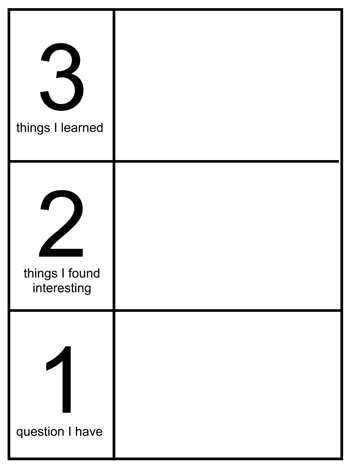
After students have been given an opportunity to think on their own or in small groups, use whole class discussion to both foster additional ideas and thinking and gain insight into student knowledge and thinking. Listening to your students discuss their ideas, experiences, and opinions is perhaps the most effective formative assessment you can do.
If you have a clear picture of the work you expect students to complete, and their exit slips reflect the experience and ability to do it, share examples of what that their work might look like or what other students have done in the past. Ask students to share their thinking and opinion about the example, in verbal or written format to help you determine their thinking matches your expectations.
If you have developed a rubric or checklist for student work, share it with learners. If your students have experience with project work, invite them to work with you to develop the assessment criteria to get them thinking more deeply about the components of what their work might entail and what quality work looks like.
Information gleaned from formative assessments around examples of high-quality work and assessment criteria will help determine if you need to further clarify your expectations and which areas of the project process you might need to scaffold to support your learners.
2. As students begin brainstorming questions and ideas and conducting initial research
Much of formative assessment occurs through face-to-face contact with individuals and small groups as they take ownership of the project. Ask students to create and use graphic organizers to provide tangible artifacts you can use to facilitate conversation, clarification, and reflection make their thinking visible. Graphic organizers are powerful tools to support student ideation and inquiry as well. For example:
Fact vs opinion organizers are helpful ways to get students analyzing information for bias, opinion, and accuracy.
Cluster organizers, along with “I see, I wonder” style organizers are helpful to get students to expand their thinking when they are just learning to take ownership of learning.
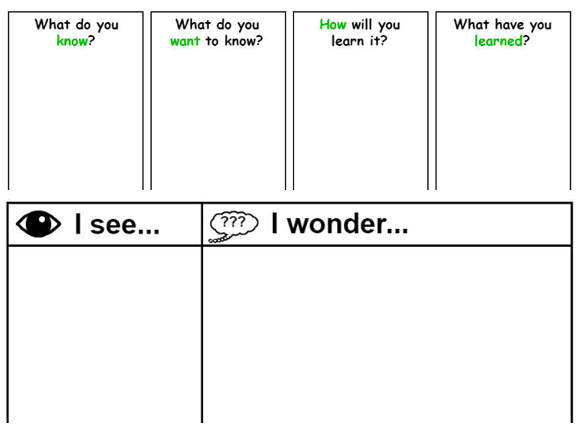
KWHL and Think-Puzzle-Explore are especially helpful as tools to prompt student action and help them determine the direction they want to take a project.
Create a Graphic Organizer
Need a thought web, timeline, flowchart, or other graphic organizer for a lesson?
CreateFive Whys organizers can help students identify cause and effect and determine factors that contribute to a problem.
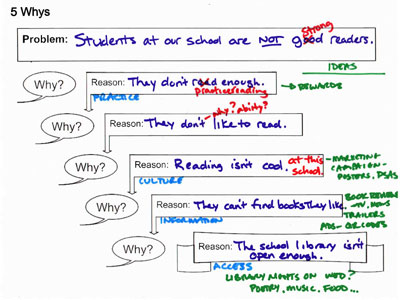
3. As teams develop a vision and plan for their work
After students brainstorm potential ideas and do additional research to answer questions they have developed, they need to narrow down their ideas, choose a direction, and develop a plan to guide their work. Again, you can support their thinking and get them to share it with you by asking them to use organizers like idea funnels or Edward de Bono’s plus-minus-interesting organizer.
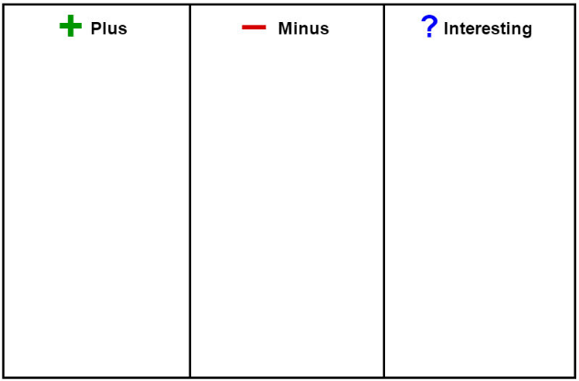
While the documents themselves provide a formative assessment opportunity, be sure to listen to students as they complete these organizers and develop their vision for the project.
If your classroom context doesn’t provide an opportunity to listen in on student thinking or the visioning process, consider asking teams to set SMART goals for their project. By asking students to describe (text, visuals, audio) their project goal in terms of five key characteristics: specific, measurable, attainable, relevant, timely provides a clearer picture of their thinking about project management and process.
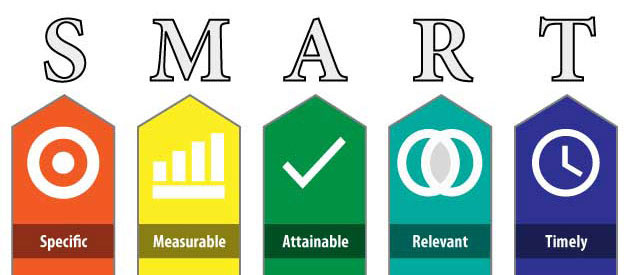
Once teams have a strong vision and clear goals for their work, have students develop a plan that shows how they will complete their project. This can be as straightforward as a storyboard for the movie they intend to produce or, for more complex projects, a GANTT chart that includes a list of tasks, who will complete them, and when they will be finished.
These two types of project plans provide different information to inform your instruction. A storyboard helps you evaluate student understanding, so you can adjust or supplement content instruction to improve student comprehension. A GANTT chart (Excel template) helps you evaluate how well students are managing and progressing on a project, so you can adjust project deadlines or provide students with additional resources or expertise.
At this point, pause student work so that teams can share their ideas and plans with their peers through processes like turn and talks, gallery walks, and small-group presentations. This exposes students to ideas, strategies, and options they have may not have considered, and makes them responsible for sharing their ideas and expertise to help other groups move forward.
4. During project work
During project work, use formative assessment to support acquisition of both academic understanding and 21st-century skills.
To ensure that students are understanding the content ideas they are working to apply, give students a short quiz about the content. Not to evaluate what they have learned, but as a check for understanding. This allows you to determine if you need to lead additional whole group lesson on content or skills, provide opportunities for productive practice, or share additional resources for students to review to clarify thinking. A small quiz or content review can also provide information on which teams you will want to provide with additional coaching to identify misconceptions and adjust project direction.
You will also want to monitor progress throughout the project-building process. As easy way to facilitate this is to post a check in as students enter class. Ask each team’s leader to indicate where the team is in relation to project goals and deadlines. You could also ask students to keep a project log each day that indicates what they learned, what they accomplished, and what they plan to do next.
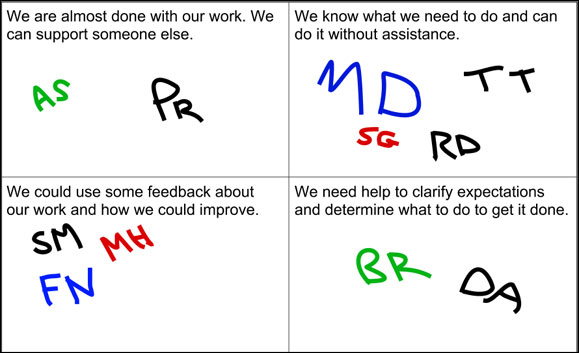
Use individual check-ins to more closely monitor the needs of the individual learners in your classroom. For example, you can use exit slips, like the 3-2-1 example shown above, to give students an opportunity to share their ideas and thinking nonverbally and privately. Create your own exit slips with questions like:
- What are the three important things you discovered today?
- What did you find frustrating?
- What do you wonder?
- What should you do tomorrow?
As you listen to students as they work and coach their teams, share strategies that one group has found successful with the entire group. For example, if one group discovered a great how-to site for the technology tool you are using, ask them to present and share it with the class. If a group has found an expert in your local community, see if they can facilitate this group or person to share expertise with the entire class.
As teams get close to completing a project, it is a great time to again give students responsibility for the learning and success of the entire group. Provide each team with a rubric or checklist you have developed together so they can evaluate their own work and progress toward their goals.
Use small group presentations, team turn and talks, or “appointment clocks” to quickly pair up groups so that team members can provide feedback on ideas, work, and presentation. You might want to scaffold their feedback with sentence starters like:
- You do a great job of…
- I would love to see more…
- Can you explain…
- What if…
5. During the reflection process
Project celebrations or events where student work in PBL is shared are fantastic opportunities for summative assessment. If your PBL implementation includes presentations of learning (POLs) as well, you can use the information gleaned during the process to inform your approach to future project work with these students.
During presentations of learning, students, or teams of students, share how their knowledge, skills, and learning progressed over the course of project work. As students share more deeply about the process and receive feedback from their peers and other audience members, you gain a deeper insight into what worked and what didn’t for each learner. Use and reflect on this information to adjust your approach to content and process during your next project implementation.
Assessing throughout is essential
Constant formative assessments throughout the PBL process provide essential information you can use to inform your instructional approach, both during this project and in future projects. While listening to students as you coach them through the content and process of project-based learning may be the easiest formative assessment approach, tangible assessments are essential to effective change. Graphic organizers and other content-understanding and progress checks helps to make student thinking visible, so you can more easily identify misconceptions and approaches that aren’t working for your learners.




